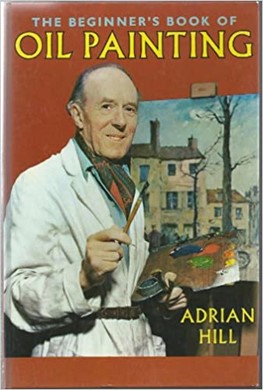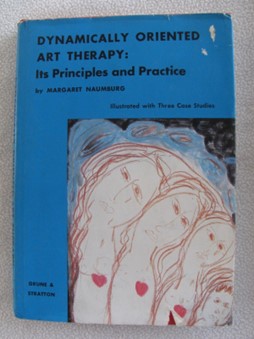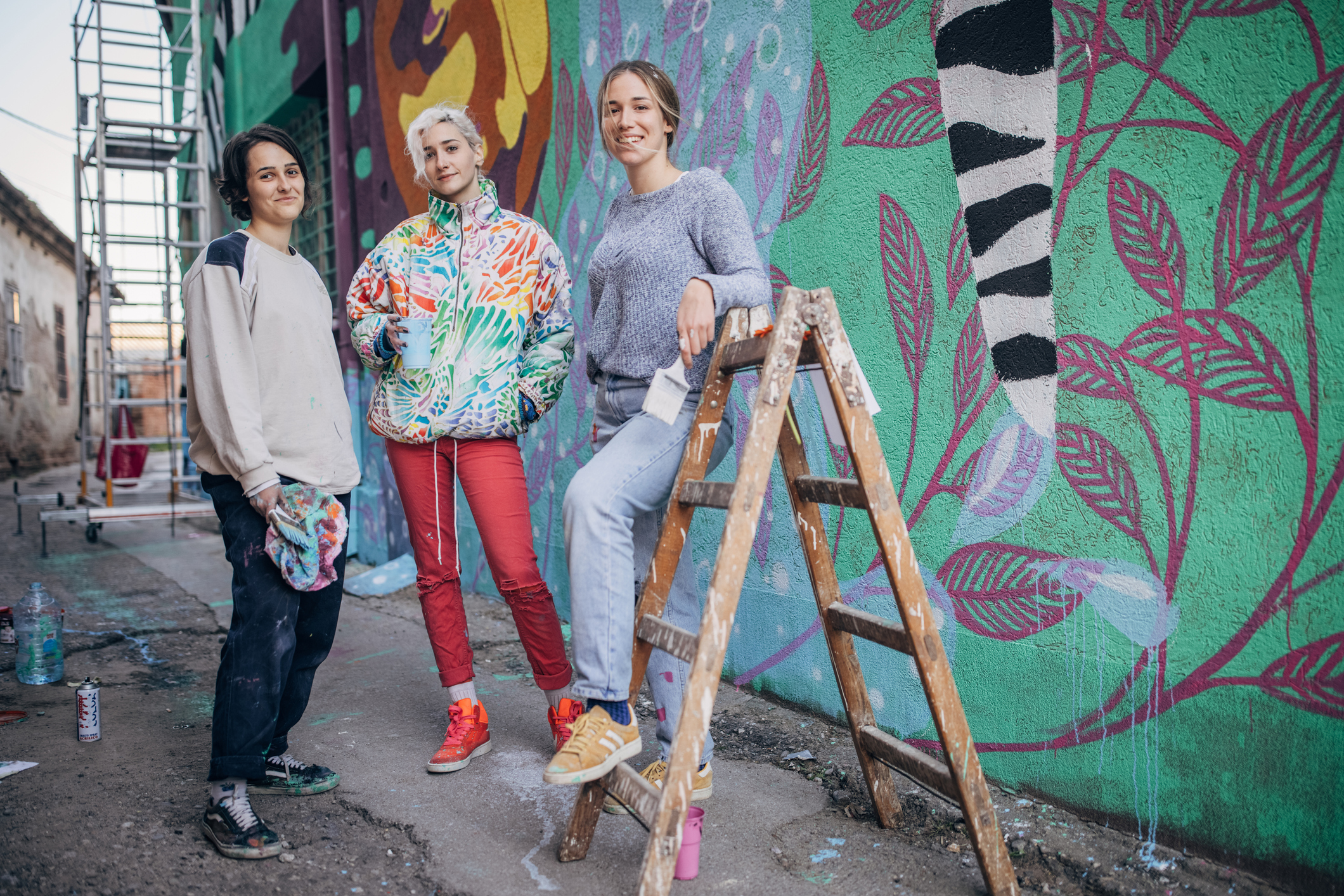While “art therapy” may sound like a distinctly new-age concept, it is anything but. Humans have always understood the therapeutic value of expressing themselves creatively. Some researchers place the earliest known intersection of medicine and the arts as far back as the cave-dwelling cultures of 40,000 years ago.1 Unless you happen to be a brontosaurus, that doesn’t qualify as “new age” by any means.
The History of Art Therapy
Art therapy can be defined in a number of ways. In a modern context, art therapy is usually a structured program where someone engages with an artistic process (e.g., a painting lesson or learning a musical instrument) with the deliberate intention of treating some mental or physical condition. Art has always been therapeutic, however. As a result, the story of art therapy begins long before any research experiments or scientific journals.
Art Therapy Pre-History
Pinpointing the origin of art therapy is impossible. Humankind has been communicating through drawing, dancing, storytelling, and the creation of aesthetically pleasing objects since before written history was a concept. This artistic expression has always been deeply linked to spiritual and therapeutic uses.
Today, the boundaries between art, medicine, and religion are very well defined, even to the point where these seem like entirely separate concepts with no meaningful overlap. For many ancient cultures, however, these distinctions were blurred to the point of nonexistence. A particular statue, for example, might be carved for use in a healing ritual that also had a deeply religious element to it. These early connections between the creation of aesthetic objects and the healing of the body, mind, and spirit may seem ancient and distant, but this tradition is still very much in line with the function and purpose of today’s more structured art therapy.
Art Therapy in Europe’s Tuberculosis Sanatoriums

Art therapy as a formally structured medical practice began in Europe in the mid-1900s. The term itself is most often attributed to Adrian Hill, a British artist, who is believed to have coined the phrase “art therapy” in the 1940s.
Early use of art therapy occurred while treating tuberculosis patients. Tuberculosis was rampant throughout much of the era. In those days, treatment most often involved locking the infected (and contagious) patient in a sanatorium. These facilities existed as a combination of a modern medical quarantine center and inpatient hospital. In fact, art therapy sees continued use in tuberculosis cases today.2
People noticed that tuberculosis patients who expressed themselves through drawing and painting seemed to suffer less overall. By engaging in an artistic process and expressing themselves through a visual medium, they experienced a level of freedom and interactivity that their lonely, confined circumstances did not otherwise allow. It was obvious to observers among medical staff and patient families that the creation of art provided a healthy emotional release that was beneficial to the recovery process.
These theories and practices were adopted and formalized by mental hospitals and other institutions throughout Europe at a fairly rapid pace. By 1964, the United Kingdom was home to a professional organization calling itself The British Association of Art Therapists.
Art Therapy Comes to America

The American Art Therapy Association was not far behind, being founded five years later in 1969. Educator Margaret Naumburg was instrumental in popularizing art therapy with American patients and institutions. Naumburg’s work was deeply psychological and focused on expressing unconscious and subconscious thoughts through free association forms of art. Popular American artist Edith Kramer was another early proponent of art therapy in the United States.
What Does Art Therapy Do?
As with art itself, your therapeutic relationship to art can be a deeply personal and subjective thing. Just as art can be used and understood in almost unlimited ways, there are also nearly limitless health and wellness implications for art therapy. Psychology, emotional wellness, cognitive development, and even cardiovascular health are just a few of the areas in which art therapy might improve your overall health. It all depends on what sort of art you’re doing and how you’re going about it.
Specific applications for art therapy treatment include:
- Expression of thoughts or feelings for persons with limited vocabulary/nonverbal persons.
- Psychotherapy related to trauma, abuse, grief, and related issues.
- Anxiety reduction.
- Treatment of eating disorders.
- Connection to subconscious or unconscious thought patterns.
Art Therapy in Action
You don’t need a medical diagnosis to benefit from art therapy.
Some examples of simple, everyday ways art therapy can have positive manifestations on anyone’s overall well-being include:
- The artistic process is deeply meditative for many people, and meditation has a variety of positive effects.3
- A dancer regularly engages in exercise and reaps all the health benefits that come with it.4
- A sculptor working in heavy materials will develop muscle tone and endurance.
- Creative writing can be a great way for someone to work out psychological and emotional issues at a distance by projecting them onto fictional characters
- Regular daily journaling is a great practice for people who are equipped to confront their issues in a less abstract way.
- Emergent forms of modern art (e.g., multimedia experiences, narrative video games) often involve teams of artists sharing highly specialized skills while collaboratively solving problems to create a piece of interactive art. The social and technical elements of such art forms can have a positive impact on many aspects of cognitive and emotional health.
- General non-medical applications can increase mindfulness and help achieve personal growth.
These are just a few specific examples. The ways in which art can be therapeutic to you are only limited by your imagination and your willingness to engage with the artistic process in a healthy and open way.
Is Art Therapy Scientifically Proven?

Some people mistakenly see art as being at odds with science, but art therapy is a beautiful and powerful intersection of the two. There is serious ongoing research into art therapy for a variety of applications, treating everything from AIDS to Parkinson’s.
Research conducted by the American Journal of Art Therapy found that people with mental health issues can benefit from the presence of art, and from art therapy.In fact, one study examined 27 reports on this subject to determine the effectiveness of art therapy and found that the following clinical populations experience significant positive impact:
- Cancer patients
- Individuals coping with trauma or PTSD
- Those with a mental health or substance use disorder
- Prison inmates
- Elderly populations
- Others who face daily challenges
In general, clients who have experienced emotional trauma, physical violence, domestic abuse, anxiety, depression, and other psychological challenges find that art therapy helps them cope.
Art therapy is a recognized profession, with its own master’s level training program. However, science is still studying the full benefits. For example one belief, not yet proven by science, is that different art media activate different brain regions. Some researchers have noted that media such as watercolor or clay helps the individual tap into more emotional centers. Whereas more technical activities that require measuring or building something 3D instead use more cognitive processes.
Some mental health professionals believe that a patient’s work often contains symbolic meanings, and these reflect memories and emotions that are difficult to access with words alone. Case studies do suggest that these treatments are effective.
However, because art therapy engages many different parts of the brain, it’s difficult to pinpoint exactly which part to focus on for an isolated study. A study that could untangle all of the various aspects of seeing, thinking, or doing (visual, cognitive, or motor skills) would be a big challenge.
Is Art Therapy for Me?
You can get lost in a self-guided art-for-therapy project, such as art journaling, or find a more structured class with an art therapist depending on your needs and personal style. If you require serious medical or psychiatric intervention, many modern in-patient programs for common issues like addiction now offer alternative therapies, including art therapy.
Whatever your specific needs, experience and science tell us that art can help. For a person who is struggling with the symptoms of trauma or stress, for example, learning to express your feelings in a soothing and supportive way can be extremely helpful.
Nearly 23 million Americans struggle with mental health and substance use disorder issues every day.6 Only a small fraction of them will ever receive the expert care and consistent support needed for a successful, lasting recovery.
Support Art for Recovery

At ECHO Recovery, our mission is simple: to help as many people as possible find effective addiction treatment, education, sober housing and access to supporting mental health services, such as art for therapy classes, events and workshops. We believe in the power of art and want to make free therapeutic art activities accessible to all that need them.
Donate to ECHO Recovery today. Your donations will be used to support our Art for Recovery initiative. For more information visit our Art Corner and be sure to sign up for our newsletter to receive updates on future events, featured artists and merchandise for our Art Cart. Every effort, small or big, helps!
Sources:
- Fancourt, D. (2017-05-25). A history of the use of arts in health. In Arts in Health: Designing and researching interventions. Oxford University Press. Retrieved 1 Mar. 2022, from https://oxford.universitypressscholarship.com/view/10.1093/oso/9780198792079.001.0001/oso-9780198792079-chapter-1.
- David, I. R., & Ilusorio, S. (1995). Tuberculosis: Art therapy with patients in isolation. Art Therapy, 12(1), 24-31.
- Beauchamp-Turner, D. L., & Levinson, D. M. (1992). Effects of meditation on stress, health, and affect. Medical Psychotherapy: An International Journal. https://psycnet.apa.org/record/1994-18824-001
- Penedo, F. J., & Dahn, J. R. (2005). Exercise and well-being: a review of mental and physical health benefits associated with physical activity. Current opinion in psychiatry, 18(2), 189-193.https://journals.lww.com/co-psychiatry/Abstract/2005/03000/Exercise_and_well_being__a_review_of_mental_and.13.aspx
- Arkhipova, S., & Lazutkina, O. (2022). Psychomotor development of preschoolers with speech pathologies by means of art therapy techniques. Revista Tempos e Espaços em Educação, 15(34), 1.
- Drug abuse statistics. (2021) Retrieved March 2, 2022, from https://drugabusestatistics.org/
Jenny Weatherall is the co-owner and CEO of Eminent SEO, a design and marketing agency founded in 2009. She has worked in the industry since 2005, when she fell in love with digital marketing… and her now husband and partner, Chris. Together they have 6 children and 3 granddaughters.
Jenny has a passion for learning and sharing what she learns. She has researched, written and published hundreds of articles on a wide variety of topics, including: SEO, design, marketing, ethics, business management, sustainability, inclusion, behavioral health, wellness and work-life balance.


